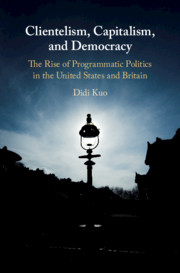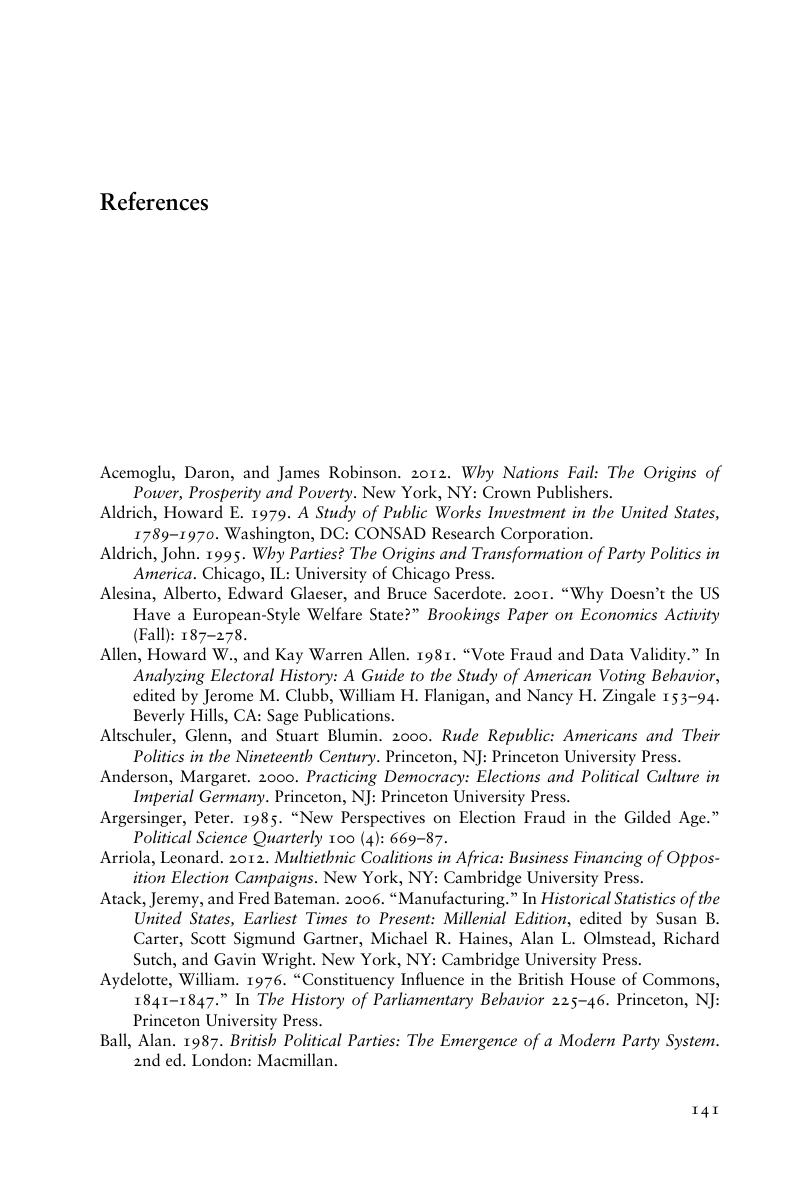 Clientelism, Capitalism, and Democracy
Clientelism, Capitalism, and Democracy Book contents
- Clientelism, Capitalism, and Democracy
- Clientelism, Capitalism, and Democracy
- Copyright page
- Dedication
- Contents
- Figures
- Tables
- Acknowledgments
- Introduction
- 1 Clientelism as a Failure of Governance
- 2 Clientelism as a Governing Strategy in the United States
- 3 Business Organization and the Push for Programmatic Parties
- 4 Clientelism and Governance in Britain, 1850–1880
- 5 Administrative Reform and Programmatic Parties in Britain
- Conclusion
- References
- Index
- References
References
Published online by Cambridge University Press: 02 August 2018
- Clientelism, Capitalism, and Democracy
- Clientelism, Capitalism, and Democracy
- Copyright page
- Dedication
- Contents
- Figures
- Tables
- Acknowledgments
- Introduction
- 1 Clientelism as a Failure of Governance
- 2 Clientelism as a Governing Strategy in the United States
- 3 Business Organization and the Push for Programmatic Parties
- 4 Clientelism and Governance in Britain, 1850–1880
- 5 Administrative Reform and Programmatic Parties in Britain
- Conclusion
- References
- Index
- References
Summary

- Type
- Chapter
- Information
- Clientelism, Capitalism, and DemocracyThe Rise of Programmatic Politics in the United States and Britain, pp. 141 - 156Publisher: Cambridge University PressPrint publication year: 2018


